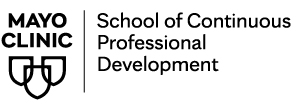Mayo Clinic Proceedings - Small Intestinal Bacterial Overgrowth: A Primary Care Review (December 1, 2016)
One of the premier peer-reviewed clinical journals in general and internal medicine, Mayo Clinic Proceedings is among the most widely read and highly cited scientific publications for physicians, with a circulation of approximately 125,000. Mayo Clinic Proceedings is published by Elsevier and sponsored by Mayo Clinic and the Mayo Foundation for Medical Education and Research. The mission of Mayo Clinic Proceedings is to promote the best interest of patients by advancing the knowledge and professionalism of the physician community. Since 2009 the Journal has offered CME credit for specific articles from both the Mayo Clinic for Concise Review for Clinicians and specially commissioned Symposia articles (comprehensive coverage on one topic).
Participation in this activity consists of reviewing articles and responding to a short online test. It is estimated that this activity will take approximately one hour per article. There is no charge for participating in this Journal CME activity.
To receive CME credit, please do the following:
- Click Take Course
- Complete quiz and evaluation (There is a required 80% pass rate in order to earn credit, with 1 retake allowed.)
- Print your Record of Attendance
Questions? cme@mayo.edu
Target Audience
The target audience for Mayo Clinic Proceedings is primarily internal medicine physicians and other clinicians who wish to advance their current knowledge of clinical medicine and who wish to stay abreast of advances in medical research.
Learning Objectives
On completion of this article, you should be able to (1) identify common conditions and factors that predispose to the development of small intestinal bacterial overgrowth, (2) appraise the strengths and weaknesses of the diagnostic testing options used in the evaluation of small intestinal bacterial overgrowth, and (3) develop an understanding of the management strategies available for patients with small intestinal bacterial overgrowth.
DISCLOSURE SUMMARY:
Planning Committee:
William Lanier, M.D., Thomas Beckman, M.D., Christopher M. Wittich, M.D., Terry Jopke, Nicki Smith
Authors:
Edward J. Krajicek, MD, and Stephanie L. Hansel, MD
From the Department of Internal Medicine (E.J.K.) and Division of Gastroenterology and Hepatology (S.L.H.), Mayo Clinic, Rochester, MN
DISCLOSURES:
Relevant financial relationships:
Planning Committee - None
Authors - None
Off-label drugs or devices:
Planning Committee - None
Authors - None
Accreditation Statement:

In support of improving patient care, Mayo Clinic College of Medicine and Science is jointly accredited by the Accreditation Council for Continuing Medical Education (ACCME), the Accreditation Council for Pharmacy Education (ACPE), and the American Nurses Credentialing Center (ANCC) to provide continuing education for the healthcare team.
Credit Statement(s):
AMA
Mayo Clinic College of Medicine and Science designates this Journal-based CME activity for a maximum of 1.00 AMA PRA Category 1 Credits™. Physicians should claim only the credit commensurate with the extent of their participation in the activity.
Successful completion of this CME activity enables the participant to earn up to 1 MOC point in the American Board of Internal Medicine’s (ABIM) Maintenance of Certification (MOC) program. Participants will earn MOC points equivalent to the amount of CME credits claimed for the activity. It is the CME activity provider’s responsibility to submit participant completion information to ACCME for the purpose of granting ABIM MOC points.
Other Healthcare Professionals
A certificate of attendance will be provided to other healthcare professionals for requesting credits in accordance with state nursing boards, specialty societies, or other professional associations.
For disclosure information regarding Mayo Clinic School of Continuous Professional Development accreditation review committee member(s), please go here.
Available Credit
- 1.00 ABIM
- 1.00 AMA PRA Category 1 Credit™

 Facebook
Facebook X
X LinkedIn
LinkedIn Forward
Forward